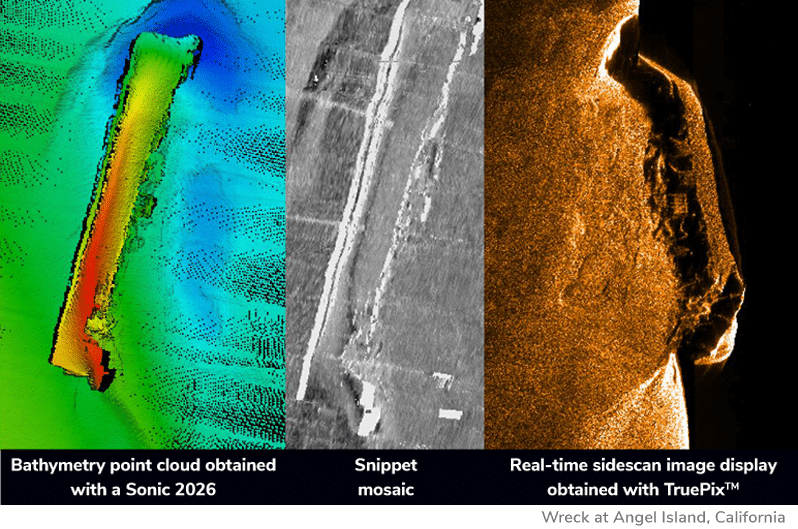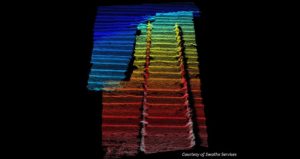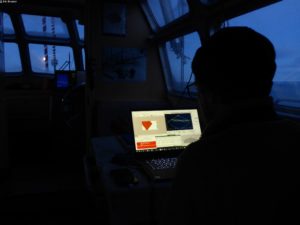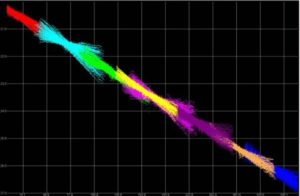With TruePix® data is independent of the bottom detection process
TruePix® delivers smaller data volumes; it’s a compressed water column
Differences between Side Scan, Snippets and TruePix®
Snippets is a bottom-detection technology based on footprint-time-series data. Unlike side scan technology (which registers range-time-series data), snippets record time-series around the center of a beam’s footprint as it falls on the seafloor. Snippets provide the amplitude of time-series signals reflected back to the MBES.
Snippets, being a newer technology than side scan, has been able to at least partially overcome some of the limitations posed by side scan technology – among them the inability to geolocate backscatter and bathymetry, as well as being sensitive to echoes and multipath. However, snippets continues to present limitations.
Here, we explore some of the drawbacks of snippets, while contrasting the advantages of TruePix®. Offering full angle, range and amplitude data, TruePix® offers many unique benefits, including providing accurate geolocation, while also collecting backscatter and water column data simultaneously.
TruePix® can be enabled on any R2Sonic MBES, converting any Sonic series into a multi-function sonar.
Here’s how snippets and TruePix® compare.
Data detection and bottom detect
Snippets are a bottom detection-dependent technology, recording footprint-time-series data around the center of the beam’s footprint on the seafloor. In other words, snippets provide the amplitude of the time-series data reflected back from the seabed. This bottom-detect approach means that if a target is located in the water column between the sonar and the seafloor, the corresponding snippets for the backscatter (over a given region of seafloor) will be eliminated, resulting in data holes. Snippets require a bottom detection; if there is not a bottom detection, there will not be a snippet record.
In contrast, TruePix® can report multiple targets per beam at different ranges, as it works using range-time-series data. TruePix® is independent of the bottom detection and is therefore able to accurately report information from both the seabed and the water column, with amplitude, range and angle information.
Data volume
With snippets, beams must overlap to ensure full bottom coverage. As a result, the information reported for each overlapping time slice is calculated based on the data from two beams (or footprint-time-series). This increases the volume of data processed by a significant factor.
TruePix® works differently: it compresses water column data by reporting only relevant targets. TruePix® returns water column data and backscatter data simultaneously, reporting only two samples per range bin (one for port and one for starboard). In contrast, traditional water column data returns 256 samples per range bin (as many as there are beams). Consequently, the volume of data with TruePix® is 128 times smaller than with traditional water column data. The ability to also provide simultaneous backscatter information leads to a further reduction by a factor of two.
The TruePix® water compression scheme is patented by R2Sonic.
Here is a summary table that compares snippets and TruePix®.
| Angle information | Independent of bottom detect | Potential backscatter data holidays | Water column data | Volume of data | Type of time series | |
|---|---|---|---|---|---|---|
| Snippets | Yes, but only for the center of the beam | No | Yes | No | Large | Amplitude centered on bottom detect point of beam |
| TruePix™ | Yes, with every sample | Yes | No | Yes | Small | Amplitude, range and angle |
The images below are a testimony of the high resolution obtained with TruePix®:




